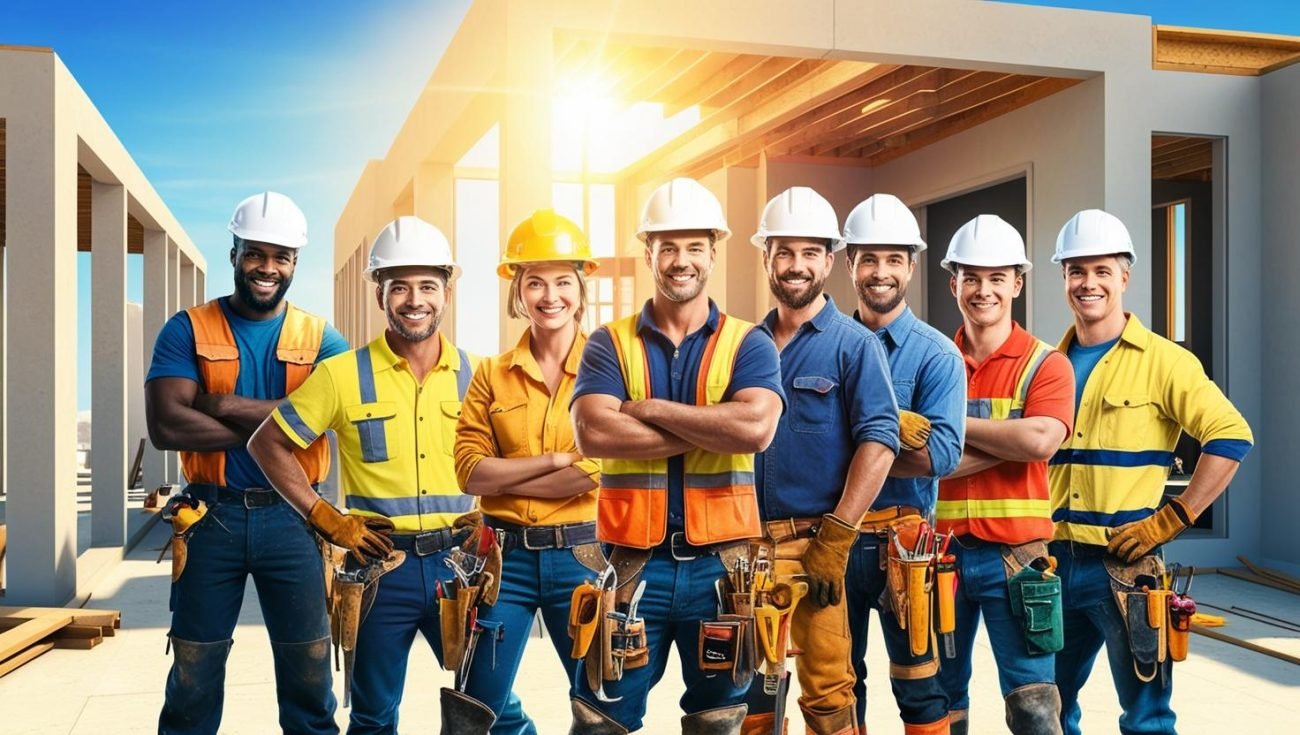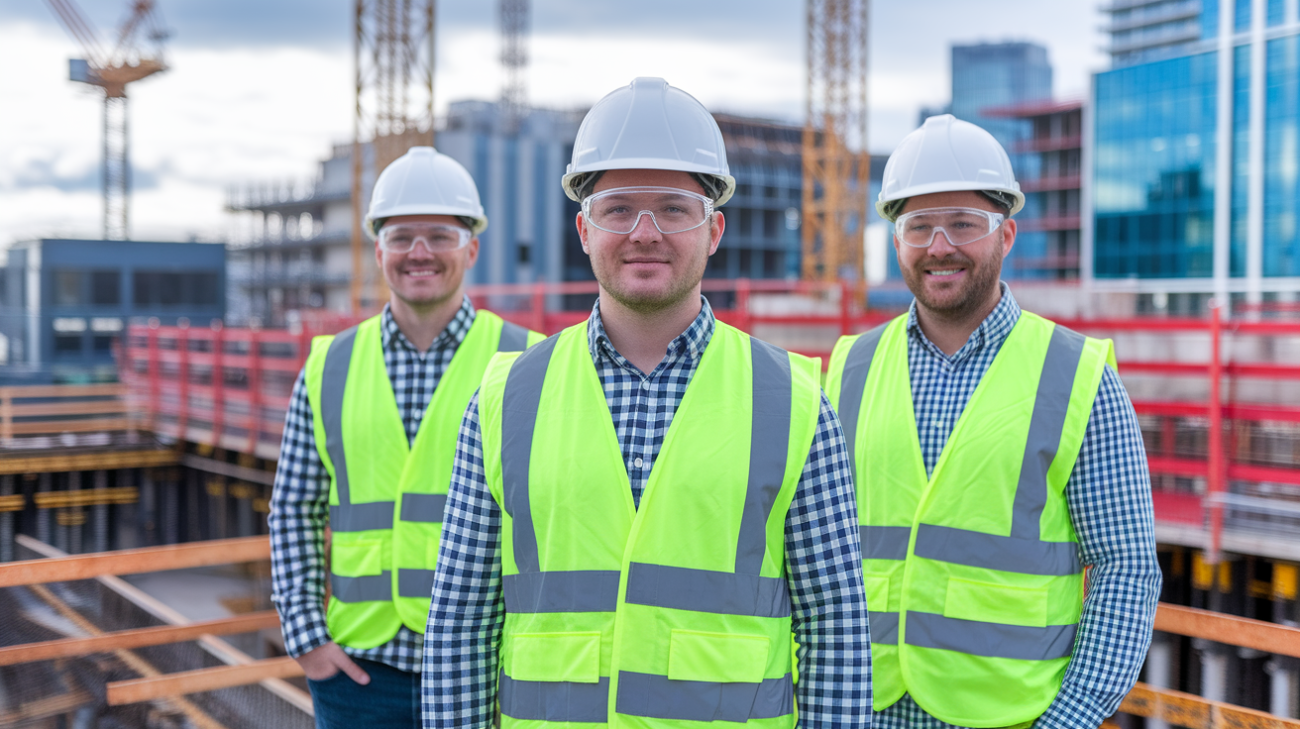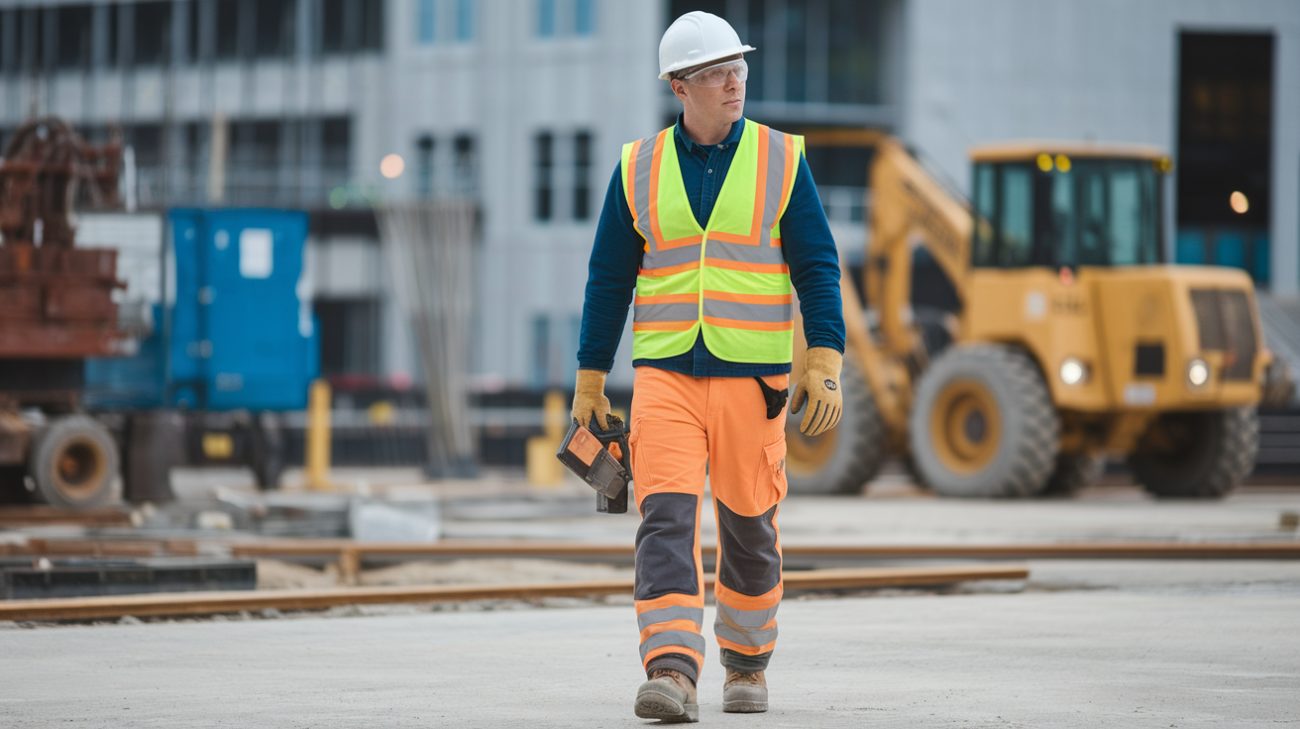Workwear Clothing Essentials: Types of PPE for Construction Workers | Mar 2025 Guide
 When working in the construction industry, safety is the number one priority. Construction sites can be hazardous, unpredictable, and filled with risks. That’s why proper Personal Protective Equipment (PPE) and workwear are crucial for ensuring the safety and health of workers. PPE is not just about compliance—it can save lives.
When working in the construction industry, safety is the number one priority. Construction sites can be hazardous, unpredictable, and filled with risks. That’s why proper Personal Protective Equipment (PPE) and workwear are crucial for ensuring the safety and health of workers. PPE is not just about compliance—it can save lives.
Why Is PPE So Important in Construction?
Construction workers face numerous potential hazards daily, whether working at great heights, operating heavy machinery, handling dangerous chemicals, or being exposed to noise, dust, and debris. Without proper protective clothing, the risk of injury, illness, or even fatality increases significantly.
PPE for construction workers acts as a first line of defense against these risks, helping to:
- Prevent workplace injuries such as cuts, burns, and fractures.
- Minimize exposure to harmful substances or hazardous conditions.
- Comply with government regulations, such as OSHA (Occupational Safety and Health Administration) standards.
- Boost worker confidence and job efficiency by providing a safer environment.
Let’s dive deeper into the essential types of PPE every construction worker needs.
Types of PPE for Construction Workers

Head Protection: Hard Hats
Hard hats are one of the most recognizable PPE items and are critical to protecting workers from falling objects, debris, or accidental head bumps in tight spaces. They are constructed from durable materials such as high-density polyethylene (HDPE) and are designed to absorb impact.
Types of Hard Hats:
- Class G: General hard hats for low-voltage protection.
- Class E: High-voltage helmets offering electrical insulation up to 20,000 volts.
- Class C: Lightweight helmet with limited protection (no electrical insulation).
Key Features to Look For:
- Adjustable suspension for a comfortable fit.
- Compatibility with accessories like ear protection or face shields.
- UV sensors to indicate when the helmet needs replacing.
Tip: Replace your hard hat immediately if it shows cracks, dents, or other deformities.
Foot Protection: Safety Boots
Foot injuries on construction sites are common, making safety boots an essential part of any worker’s gear. Proper boots protect against heavy impacts, punctures, slips, and electrical hazards.
Popular Types of Safety Boots:
- Steel-Toe Boots: Provide protection from falling objects and compression injuries.
- Composite-Toe Boots: Lighter alternatives to steel-toe, made from non-metal materials.
- Insulated Boots: Provide warmth for those working in cold conditions.
- Slip-Resistant Boots: Ideal for slippery or wet surfaces.
Key Features to Look For:
- Puncture-resistant soles.
- Waterproofing for protection against water or concrete exposure.
- ER-rated boots for electrical resistance in high-voltage environments.
Eye and Face Protection: Safety Glasses, Goggles, and Face Shields

Eye and face injuries can result from flying debris, hazardous liquids, or glare. Construction workers should wear the appropriate eye and face protection based on the hazards faced.
Essential Eye & Face Protection Gear:
- Safety Glasses: Protect from dust, dirt, and low-impact debris.
- Goggles: Provide a sealed fit for higher-risk environments, such as chemical handling.
- Face Shields: Protect the entire face from splashes, sparks, and projectiles. Often used along with goggles for added protection.
Must-Have Features:
- Anti-fog and scratch-resistant lenses.
- UV protection for outdoor workers.
- Compliance with ANSI Z87.1 safety standards.
Hand Protection: Safety Gloves
Construction work involves many risky tasks, from handling sharp objects to working with chemicals. Safety gloves are critical in these environments, offering protection and improving grip.
Types of Safety Gloves:
- Cut-Resistant Gloves: Protect from lacerations when handling sharp tools or materials.
- Heat-Resistant Gloves: Protect against burns when working with hot equipment.
- Chemical-Resistant Gloves: Provide a barrier against corrosive or toxic substances.
- Impact-Resistant Gloves: Reduce the risk of blunt injuries caused by hammering or drilling.
Key Considerations:
- Check for the right level of dexterity for the task.
- Ensure the gloves match the specific hazards of your job.
- Verify that the gloves meet safety standards, such as EN388 for mechanical risks.

Hearing Protection: Earplugs and Earmuffs
Prolonged exposure to construction noise can cause irreversible hearing damage. Workers subjected to machinery noise, drills, or heavy equipment need proper hearing protection.
Two Primary Options:
- Earplugs: Disposable or reusable, earplugs are inserted into the ear canal to reduce noise.
- Earmuffs: Cover the entire ear and provide a higher level of noise reduction.
Features to Look For:
- Noise Reduction Rating (NRR) of at least 20 dB.
- Comfortable fit for long hours of use.
- Compatibility with hard hats and other headgear.
Respiratory Protection: Masks and Respirators
Respiratory protection prevents workers from inhaling harmful dust, fumes, or chemicals. This is especially important in demolition work, where asbestos and silica dust are present.
Common Types of Respiratory Protection:
- Dust Masks (N95): Effective for filtering out particulate matter like sawdust or silica.
- Half-Mask Respirators: Provide a better seal for higher levels of protection.
- Full-Face Respirators: Protect both eyes and respiratory systems from harsh chemicals and vapors.
Key Considerations:
- Ensure the mask fits snugly and comfortably.
- Check for NIOSH (National Institute for Occupational Safety and Health) certification.
- Understand the hazards and select filters/cartridges accordingly.
Body Protection: High-Visibility Clothing and Coveralls
Construction workers need proper clothing to stay safe, visible, and comfortable on site. High-visibility clothing is a requirement in most construction zones, especially those with vehicle or heavy machinery traffic.
Types of Protective Clothing:
- High-Visibility Vests or Jackets: Use reflective materials for visibility during the day or night.
- Flame-Resistant Clothing: Protects workers exposed to flames, electrical arcs, or other heat sources.
- Coveralls: Provide full-body coverage against dirt, chemicals, or hazardous materials.
Key Features to Look For:
- Lightweight and breathable fabrics for comfort.
- Compliance with ANSI/ISEA 107 standards (visibility requirements).
- Moisture-wicking or waterproof materials for outdoor work.
Fall Protection Gear: Harnesses and Lanyards
Falls are one of the leading causes of death on construction sites. Fall protection systems, such as harnesses, are essential for workers who operate at heights.
Standard Fall Protection Components:
- Harness: Distributes weight evenly during a fall.
- Lanyard: Secures the worker to an anchor point.
- Anchors: Fixed points that the lanyard or safety line attaches to.
Tips for Safe Use:
- Conduct regular inspections for wear and tear.
- Ensure the system meets OSHA fall protection standards.
- Provide proper training for workers operating with fall protection.
Weather-Specific PPE
Conditions on construction sites can change daily due to weather. Specialized PPE is needed for extreme conditions.
Cold Weather Gear:
- Insulated jackets, thermal gloves, and base layers.
- Waterproofing and windproof layers.
Hot Weather Gear:
- Ventilated helmets, moisture-wicking shirts, and UV-blocking eyewear.
- Hydration packs to prevent dehydration.
Construction workers should always prepare for the elements to avoid health risks like heat exhaustion or frostbite.
Conclusion
Workwear and PPE are more than just safety compliance measures—they are essential tools that protect lives, prevent injuries, and ensure productivity on construction sites. Understanding the various types of PPE and their functions is imperative for employers and workers alike.
Investing in high-quality PPE and providing proper training can mean the difference between a safe workplace and preventable injuries. Use this March 2025 guide to keep your team prepared, safe, and compliant with ever-evolving industry standards.
FAQs About PPE for Construction Workers
How often should PPE be replaced?
PPE replacement depends on wear and tear, type of equipment, and manufacturer recommendations. Check hard hats for cracks or UV damage, safety boots for sole wear, and gloves for perforations. Follow the manufacturer’s guidelines and conduct routine inspections.
Who is responsible for providing PPE on construction sites?
According to OSHA, employers are responsible for providing PPE to workers at no cost. This includes protection for head, eyes, hands, feet, and any additional equipment required by workplace hazards.
Can workers customize their PPE?
While customization (like adding stickers to hard hats) is common, workers should not alter equipment in a way that undermines its integrity or effectiveness. Always consult the manufacturer’s guidelines before making modifications.
What training is required for PPE use?
Workers should receive training on:
- Correct use and adjustments of PPE.
- Recognizing equipment defects.
- Storage and maintenance tips.
Training ensures that PPE is used effectively and consistently across job sites.
How can I ensure PPE is comfortable?
Well-fitted PPE is crucial for comfort during long working hours. Look for adjustable features, lightweight materials, and breathable fabrics. Additionally, train workers on proper sizing and adjustments.

